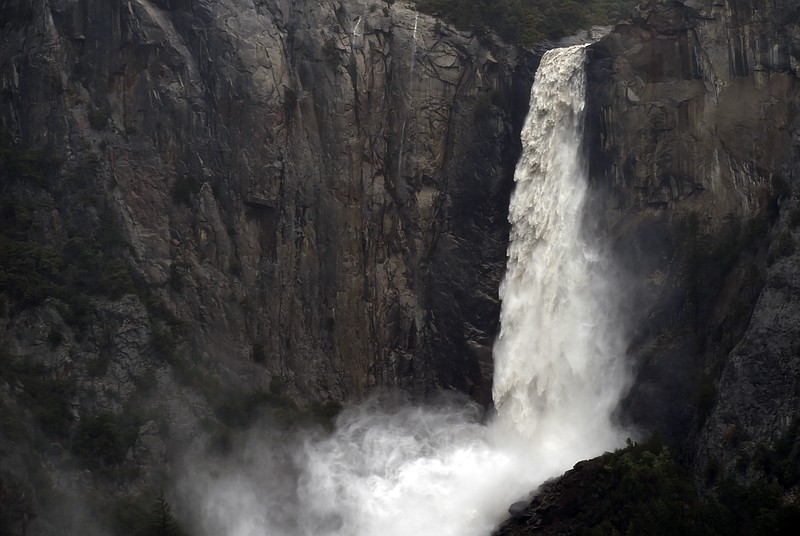Leave it to California to come up with a new idea that could give Democrats a partisan advantage in Congress.
On the ballot in November will be a proposition to divide the Golden State into three states, California, Southern California and Northern California.
The passage of the proposition is considered a long shot, but so was the presidential election of Donald Trump in 2016. And the state in question thought it had taken care to prevent that possibility, with 7.3 million votes - many of which were cast by legal voters - and its most-in-the-nation 55 electoral votes going to Hillary Clinton.
With three Californias, Democrats practically would be guaranteed six senators, three governors and who knows what else.
The idea is the brainchild of Silicon Valley venture capitalist Tim Draper, and it's not his first. In 2014, he proposed the country's largest contiguous state be carved into six pieces. However, that idea didn't qualify for the 2014 ballot.
He would divide the state not into northern, central and southern thirds, as you might think. No, Northern California would get San Francisco and everything above it. California would get the coastal counties below San Francisco and down through Los Angeles, though a much smaller land mass. Southern California would get everything else, including Palm Springs and San Diego.
The three states could give us the likes of Sen. Robert Redford, D-Northern California, Gov. Johnny Depp of California and Sen. Leonardo DiCaprio, D-Southern California. What fun!
Draper, who also is funding his movement, told the Los Angeles Times such a plan would "get us better infrastructure, better education and lower taxes." But how would that be accomplished? Well, he's mum about that.
The Times said a report by the Legislative Analyst's Office noted the prison and public universities would not be easily divided among the three states and that income taxes would be concentrated in certain areas.
To be sure, even if voters approved what has been called the Cal 3 proposition, Congress - especially if it remains in Republican hands - would not look too kindly at such a nakedly partisan move. But let's say a Democratic Congress is elected and goes along with what California voters approved (notwithstanding the multitude of lawsuits that are likely to result).
Of course, the U.S. flag would change to 52 stars, the song "Fifty, Nifty United States" - learned by million of schoolchildren - would lose its appeal and a whole new cottage industry of states splitting themselves up would take root.
Consider the possibilities:
» Texas, second in size of the 48 contiguous states, certainly would be jealous. Maps already exist of the Lone Star State divided into six to 10 geographical regions. Republicans would want to balance the three Democratic California states with five to eight Texas states out of the six to 10 created.
» Tennessee, for years said to be composed of "three states," would be a natural. Mountainous East Tennessee would be a Republican stronghold, while hilly Middle Tennessee and flat West Tennessee would be politically more divided, with the Democratic-leaning Nashville and Memphis, respectively, balancing the more Republican rural areas.
» Alaska, the nation's largest state, wouldn't want California to have anything over on it. Its potential states could be Cold Alaska, Colder Alaska and Coldest Alaska.
The problem for Democrats is that more of the states with the largest land masses tend to lean Republican. In other words, Republicans eventually could more easily outsplit the Democrats.
There is a reason none of this foolishness has occurred since 1863. That's when the western regions of Virginia split from its eastern portions to form West Virginia. The western regions had divided over secession in 1861, with officials from the western portion of the state saying that the Virginia Declaration of Rights maintained that any change in the form of government be approved by the people. Since the state's secession convention was called by the legislature, they declared its acts illegal and called to reorganize the government. That reorganized government eventually became West Virginia, though disputes with Virginia went on until 1939.
Chances are, after November, California will have to go on complaining that it has the same number of senators as Rhode Island, the smallest state in size. We don't believe even California wants to go down this path. But if it does, it can look forward to years of upheaval - fighting over the state pet (a shelter pet), state rock (serpentine) and state fabric (denim), among other things - and, eventually Senate conversations that go something like this: "The chair will recognize the Gentlewoman from Northern California, followed by the Gentleman from Western Montana."
Just don't go there.
